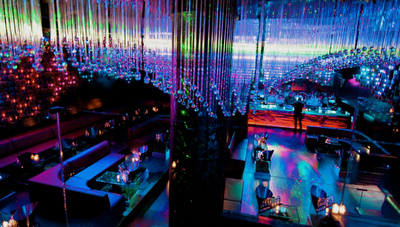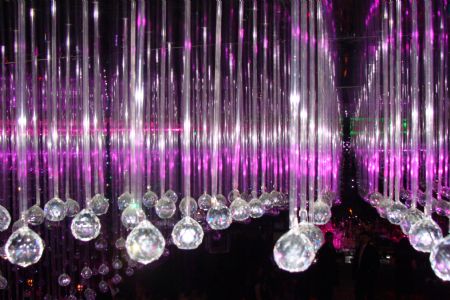Aloha blog readers!
Good to be back and blogging again, I really hope you all enjoyed my first guest post by Nate!
I certainly did.
I certainly did.
Now that I'm back from sunny San Diego and in the Dirty Jerze, I'm pumped to debut my first thrift/vintage post; a topic I feel is a bit underrated.
This is also where I show off what a great time I had in California inform you fine people of all the wonders of thrifting a.k.a. being resourceful, which, in this case, qualifies as being sustainable too!
Wow, lucky you, huh?
Wow, lucky you, huh?
While I was out in SD I stumbled across this diamond in the rough, the United Cerebral Palsy Thrift Stores.
 | ||
| An inside view of the UCP Thrift Store--mesmerizing or nauseating, whichever way you choose to look at it. I prefer more of a glass half full scenario, but that's your call. |
I chose to feature this particular store not only because of the badass new additions I now have in my closet thanks to the UCP Thrift Store but also to shine a light on alternative options other than your typical big brand name brick and mortars for sustainable clothing.
Thrift/Vintage stores are tricky.
There are those avid thrift store junkies, a special breed if I may, who delve into the dusty piles of worn and used items with the enthusiasm of a toddler waddling full speed into a McDonald's ball pit (don't even try to tell me you didn't absolutely love those things...or still do, I'm not here to judge).
 |
| Happy as a clam. |
There's somewhat of an art to thrifting and vintage shopping, insofar that one must remain open minded and have the patience to sift through those racks of moth-eaten garments for a good hour or so.
In other words, it doesn't really cater to the mass-consumer market the way a Target would and is therefore overlooked by many, which is a shame...yet it's prime real-estate for me, of course. Blogging fodder, for sure.
So, second hand stores like Buffalo Exchange (a store that let's you exchange your old clothing for money or store items) and UCP Thrift Stores (that support AND employ those with cerebral palsy) are not only great places to shop but are sustainable as well!
How are they sustainable, you ask?
Any store that resells items is essentially an eco-friendly establishment because they aren't manufacturing products. Therefore they have virtually little to no impact on the environment in a harmful way when it comes to the production of their merchandise.
It's the recycling of clothing and reducing of a carbon footprint.
Oh, and it's cheap.
As promised, here is one of my spectacular new dresses I purchased for a mere $6.95.
Accompanying my latest addition are my absolute favorite, favorite, favorite TOMS Shoes (a post on TOMS is on its way) that I'm wild about.
Sustainability head to toe.
I highly encourage everyone to give second hand stores at least one shot in your lifetime.
It takes a little more effort than picking something up at the nearest mall would, but really, what in life was ever worth having if it came easy, ya dig?
Also, farmer's markets like the one I bounced around in in Ocean Beach, stuffing my face with free samples of homemade, organic morsels (I ate peanut butter hummus...PEANUT BUTTER!) are fantastic ways of supporting local vendors whose small businesses have little environmental impact (no factories, no unfair trade, etc.).
Plus, they're super fun and are usually packed with crazy hippies.
Hippies love to be eco-friendly, therefore, I love hippies.
 | |
| My cousin Kristina stopping to "smell the roses" at the Farmer's Market. Get it? |
And a beautiful sunset in Ocean Beach, San Diego. Uhhuhh ;]
Peace, Love & Sustainable Thrift Stores<3















